Table of Contents
Jumbo the Elephant : African elephant was just two years old when his mom was killed in 1861 (near the Ethiopian/ Sudanese border), and he was taken to Europe to be displayed. Jumbo was said to have been a tiny baby elephant, a runt until he was about 5 years old. Jumbo was sold to the circus after spending time in a Paris animal menagerie and then the London Zoo. The animal star who was bigger than life would become famous, but his past is full of mystery and sadness.
Almost everyone has seen Dumbo, the Disney classic from 1941 about an elephant who learns to fly. With Dumbo’s only companion, Timothy Mouse, the picture not only mocks the bond between mice and elephants but also features racially stereotypical crows and a drunken hallucination of pink elephants.
Dumbo’s real name, on the other hand, is a little less well-known aspect of the film. Dumbo’s mother is asked to name her child in her lone line in the film, and Mrs. Jumbo responds by naming her child Jumbo Jr. Dumbo, like any good narrative, is based on fact. Specifically, a real-life elephant named Jumbo who lived a remarkable life.
Jumbo the Elephant, The World’s Greatest Show
Who’d have guessed that an elephant could infiltrate an entire community’s psyche? Everyone is touched by the Jumbo narrative, whether they know a little or a lot about it. When Jumbo pulls his trainer in for a hug as he breathes his final breath, it’s impossible not to cry.
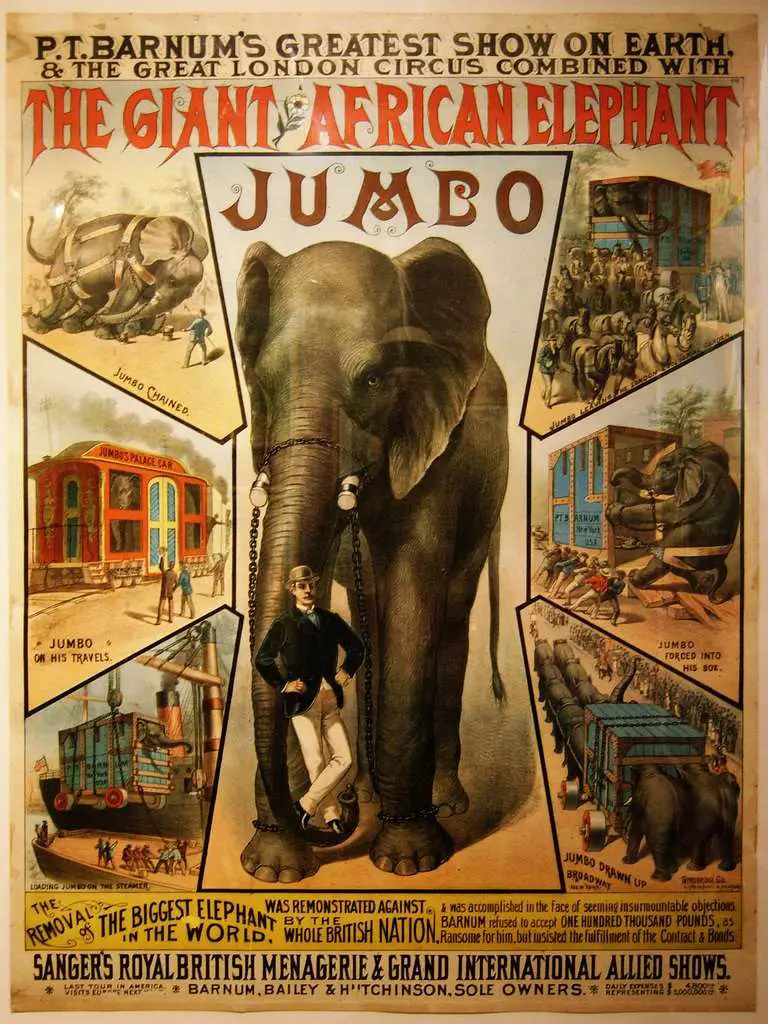
Jumbo the Elephant got Attraction in London
Jumbo was a popular attraction at the London Zoo, where numerous youngsters gave him currant buns. Queen Victoria’s children, Teddy Roosevelt, and Winston Churchill all rode on his back (for a small fee, of course). The young elephant, named after a Swahili word for chief (‘jumbe’), was a hugely popular attraction and even a social phenomenon.
Anything enormous became known as jumbo as a result of the term we still use today. Jumbo’s likenesses began to appear on everything from thread to soap to coffee commercials without Jumbo’s permission.
Jumbo lived for roughly 25 years, during which time he showed signs of grief over the death of his mother and wrath at being confined to such a small space. African elephants, for example, can live up to 50 years in the wild.
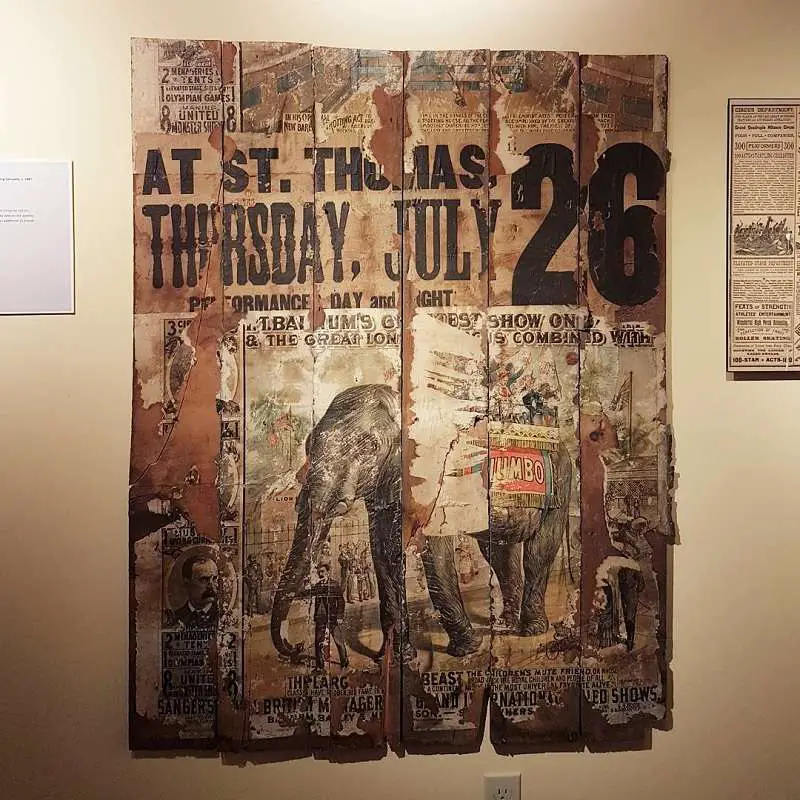
Jumbo’s outbursts of rage were uncontrollable as he approached mating age, and his chopped tusks were supposedly not a savage human imposition but marks of self-inflicted injury due to great anxiety. This is when it gets interesting. The London Zoo then sold Jumbo to P.T. Barnum’s circus, who had no idea about the elephant’s mood swings. Jumbo’s handler, Matthew Scott, was sent to America with him.
Jumbo and Scott, on the other hand, seemed to have their own hidden language. Scott allegedly offered Jumbo booze on a daily basis and was able to get him to do things that no other human could (which means they were drinking buddies as well as coworkers). The use of alcohol to quiet an animal was evidently not a reason for concern at the time, especially considering Jumbo’s size.
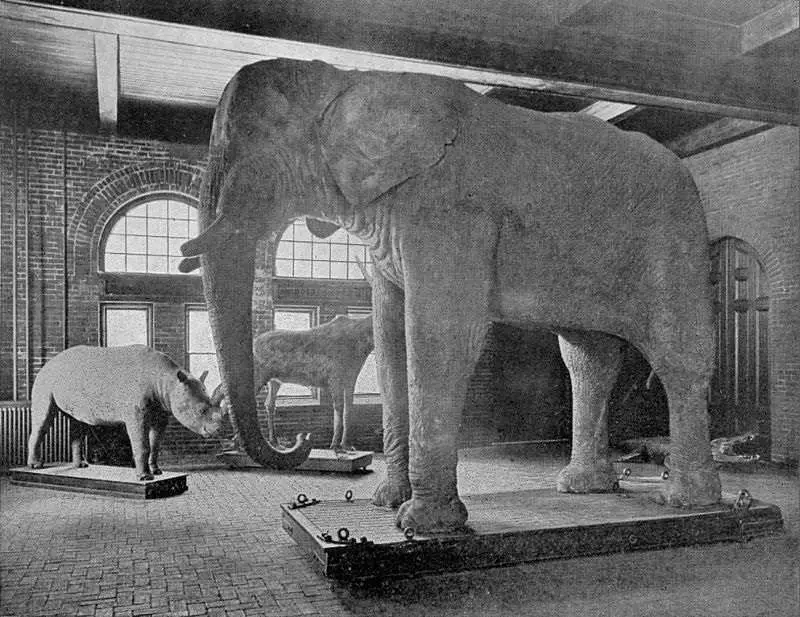
Jumbo the Elephant Travels to the United States of America
Jumbo wailed a lot on the way to the other side of the world. On the boat voyage across the Atlantic, Scott provided him with copious amounts of booze to help him relax. Jumbo seemed to settle down after arriving in the United States in April of 1882, probably due to the other elephants at the circus.
Jumbo was a circus performer who became as successful in the United States as he had been in England. Jumbo, on the other hand, did not fare well. Jumbo’s days were numbered after he was diagnosed with a mystery wasting condition.
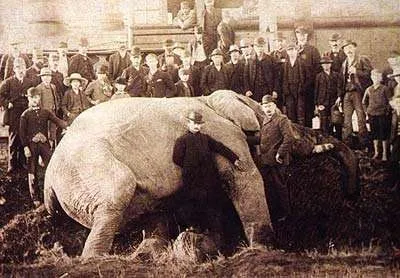
In 1885, he was hit by a train in Ontario, Canada, and one of his tusks became trapped in his brain, causing him to die instantly. After that, his handler went insane with grief, shrieking at passers-by who morbidly helped themselves to Jumbo’s ears, feet, and skin.
Jumbo had attempted to save a smaller elephant, Tom Thumb, from an oncoming railway, according to the account told to the press by Barnum. However, there has been speculation in recent years that Jumbo’s death was not as it was stated. Some feel Scott could have prevented his death, but he did not.
Was Scott’s failure to ask Jumbo to evacuate from the train’s route due to Jumbo’s fatal illness? After all, euthanizing an elephant would have been a significant financial investment at the time, and this was not a well-studied area of zoology. Nonetheless, there were suspicions that Barnum, who had already promised Jumbo’s future hide to Tufts University (where he was a trustee), had bribed Scott to get rid of the injured elephant.
In any case, Scott never really recovered from the death of Jumbo, just as Jumbo never fully recovered from the death of his mother. Meanwhile, Jumbo’s hide remained on display for a few years after his death because Barnum believed there was still money to be gained from the world’s most renowned elephant, and he was right. The hide was eventually delivered to Tufts University, where it was destroyed in a fire in 1975.
Jumbo’s remarkable skeleton is held at the American Museum of Natural History, and his tail was accidentally pulled off by a student and placed safely in the school’s archives at the time of the fire.
In 1985, to mark the anniversary of the elephant’s death, a life-size statue of the elephant was constructed in St. Thomas, Ontario. It may be found on Talbot Street on the city’s west side. The Jumbo monument was recognized in the North American Railway Hall of Fame in the category of “Railway Art Forms & Events” in 2006 as a local treasure. The Railway City Brewery in St. Thomas sells a Dead Elephant IPA.
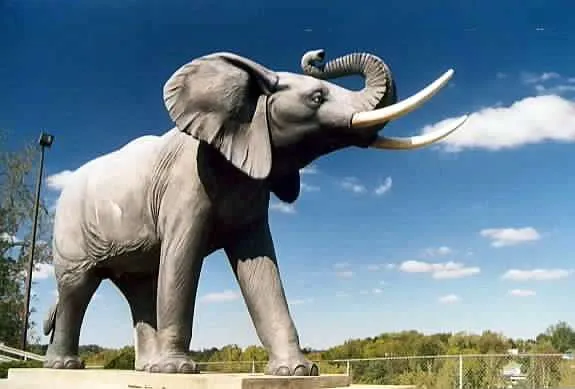
Jumbo the Elephant’s skeleton was examined
On December 10, 2017, the naturalist and broadcaster David Attenborough hosted a television program called Jumbo, Attenborough, and the Giant Elephant, which aired on BBC One in the United Kingdom.
• Jumbo’s molar teeth were crooked and misshapen because he ate a soft diet for a long time. This didn’t wear down his molar teeth enough, which stopped the next molar from coming in straight.
• Jumbo’s nightly rages were probably caused by tooth pain, not musth, as his keeper thought at the time.
• Jumbo’s limb bones had thickened areas where the tendons attached, which was a sign that he had been overworked for a long time. This was shown in an illustration made right after he died, which showed a freight train hitting him on the hip from behind as he was being led to his traveling carriage. The most likely cause of death was internal bleeding from his injuries.
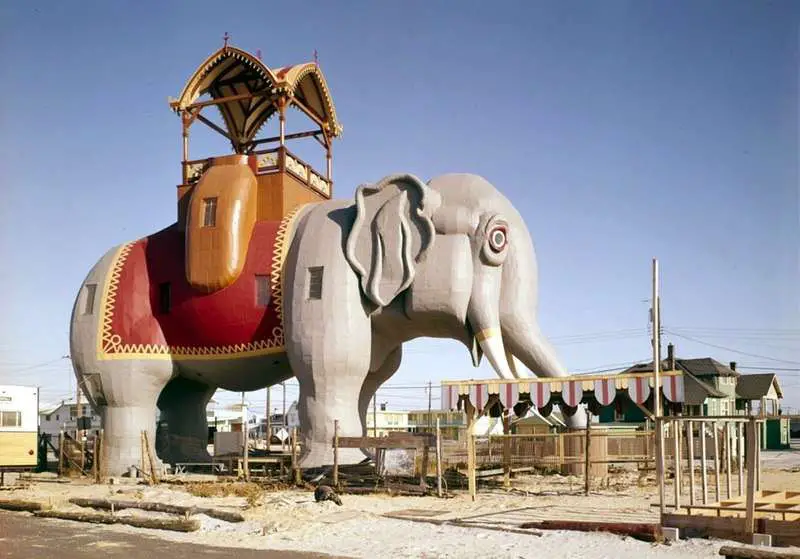
This short biography of Jumbo shows how animal historians approach animal-human stories. Jumbo’s story illustrates that animal history is not only possible but also incredibly detailed and that it can even extend beyond death. People and other animals, such as Alice, interacted with Jumbo in a variety of ways, resulting in a variety of emotional and personal reactions. So, putting animal histories into larger historical discussions could give a unique and interesting view of history.
Animals have been used for food, transportation, education, and simply as a source of entertainment throughout history. Animal studies try to bridge the gap between humans and the rest of the animal kingdom. This is similar to how social history tries to find out what happened to most people at the time.
Credit: Wikipedia | RailwayCity
All the information and photo credit goes to respective authorities. DM for removal please.
Read More>>> Is Gizzly Man A True Story? What Happened Amie Huguenard?
